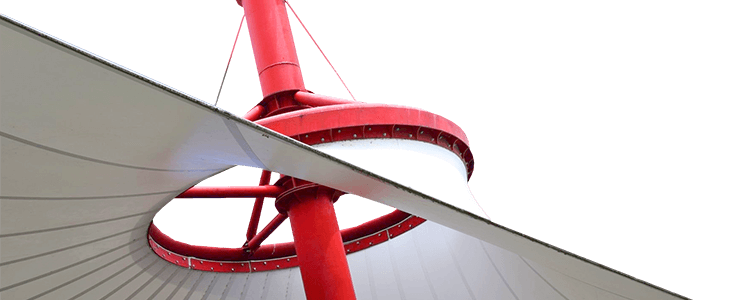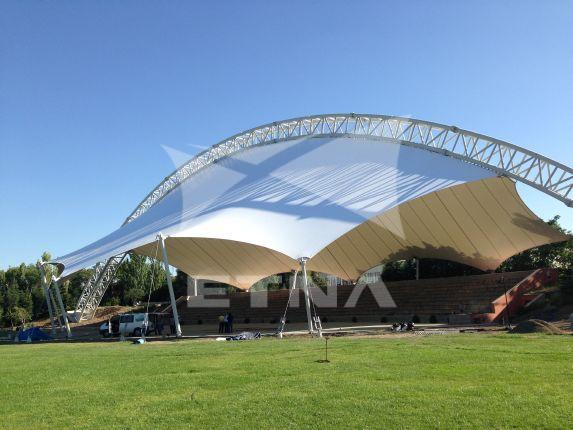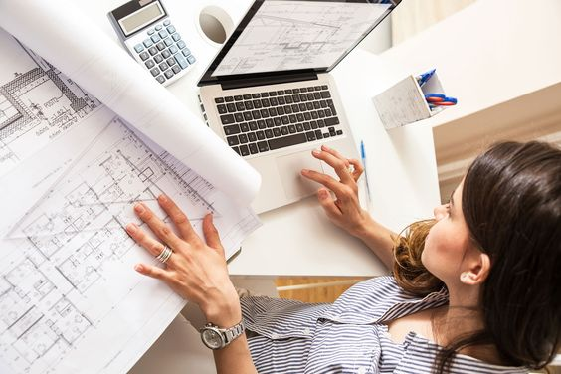Suspended Tensile Structure
The classification of suspended tension structures is made in the plane in which the tensile forces act on the structure. In this context, suspended tensioning systems are divided into the following types.
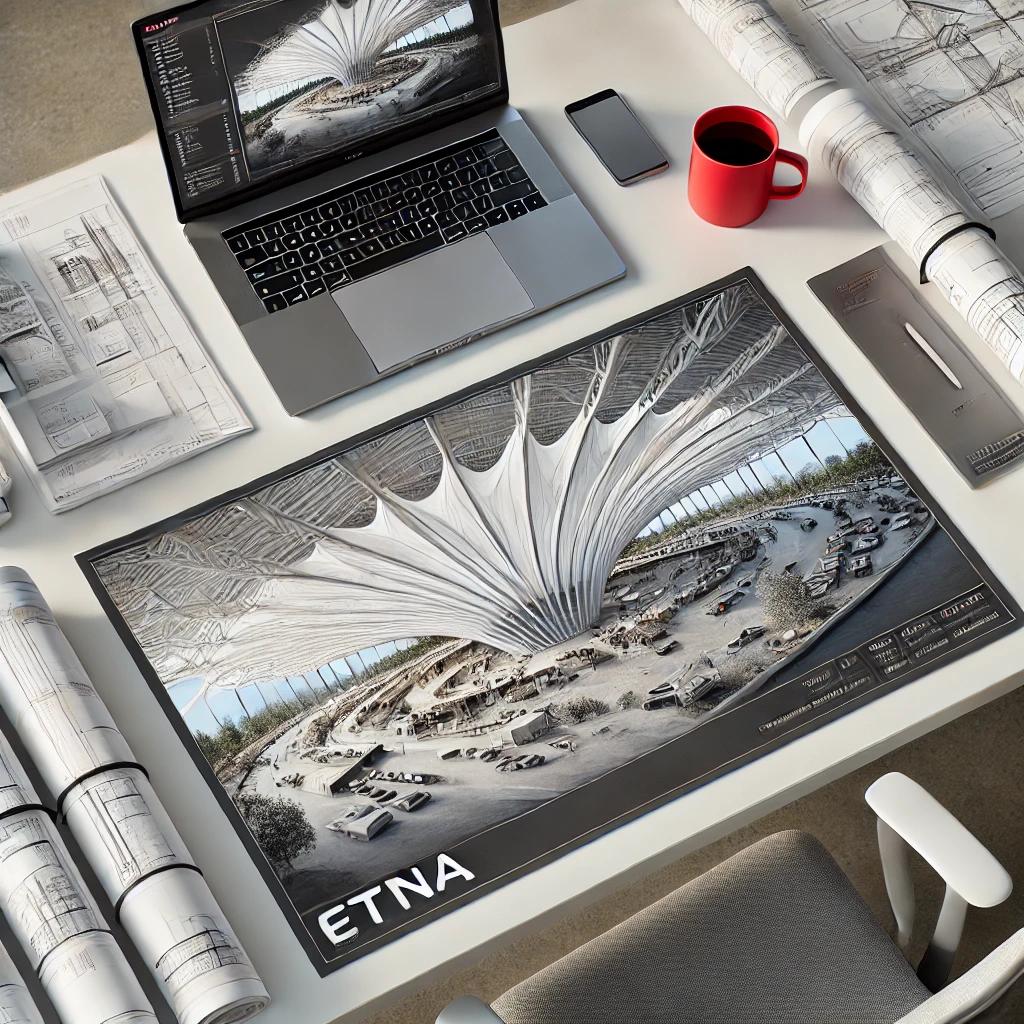
1.Linear Suspension Tensioning Systems
Linear structures are systems in which all elements in the suspended tension structure are under the action of linear tensile forces. These linear elements are supported by compression elements, but the main loads are realized by tension elements. A common example of these structures are cable-stayed suspension bridges. The prime movers act as the pressure element, but the entire load is carried by the tensioned ropes. Linear suspension tension structures are further classified into the following types,
- Suspension bridges
- Draped ropes
- Rope beams or trusses
- Rope truss system
- Flat tension cables
2.Three-dimensional 3D Suspension Tensioning Systems
Three-dimensional suspended tension structures consist of a combination of elements, mainly in tension, through which pressure is transferred to the column and the floor.Three-dimensional suspended tension structures are classified into the following types:
- Bicycle wheel (can be used as a horizontal directional roof)
- 3D rope truss system
- Tensile structures
3. Surface Stress Suspended Tensioning Systems
Surface tensioned suspended tension structures are the same as the other 2 categories of structures, but the surface elements are the load-bearing elements. Membrane cover tension structures are systems where the load-bearing columns hold the specially designed and tensioned cover. Surface tensioned suspended tension structures are classified into the following types:
- Textile fabric structures
- Prestressed membrane structures
- Pneumatic inflatable structures
- Grid shell structures
Four basic forms used in suspended tension structures;
1. Conical Form
Highly effective for covering large areas, the conical structure is easily identified by its tent-like shape. Conical designs can have single or multiple carriers. In both design options, the membrane cover is tensioned between a ring at the apex and load-bearing columns at the bottom. Conical systems are particularly effective in areas with high rain or snow loads.

2. Hypar or Anticlastic Form
Hyper (hyperbolic paraboloid) shapes, one of the most common membrane structures preferred for their aesthetically pleasing appearance, are functional and attractive due to their form finding and water flow between elevations. These structures rely on two opposing curvatures, also known as anticlastic, for their stability. This type of structure is ideal for building enclosures, parks/gardens/playgrounds and walkways with pedestrian traffic.
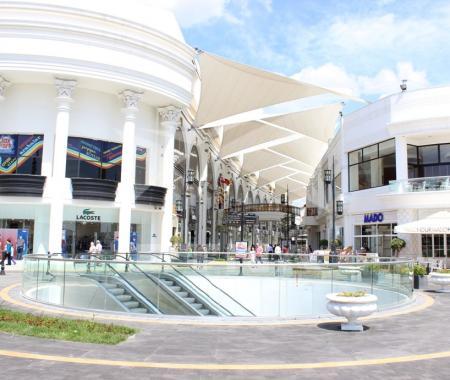
3. Parallel Arch or Barrel Vault Form
These symmetrically curved parallel arch designs are a highly functional form, providing coverage in smaller spaces such as large-span sports courts or entrance canopies.
The barrel vault system chosen in the statics depending on the openings, the symmetrical nature of the design and the efficiency of the materials explain to us why we need to include a suspended tension membrane system in a project due to the economic advantages it creates in the total budget.

4. Rope Carrier Covering System
Typically, it is preferred in stadiums, courtyard covers and upper coverings of inter-building areas in shopping malls. It provides a great advantage in functions where the area under the roof cover should not have load-bearing columns in the design context. Rope mesh or grid rope structures are an efficient design solution for lightweight architecture.
Advantages of Suspended Tensile Structures
- Providing protection in sun, rain, wind conditions
- Opaque, semi-opaque and transparent alternatives
- Providing a wide variety of forms in the carrier system design in terms of lightness and strength,
- Minimized construction time while providing an impressive and modern design,
- Ability to pass through wide openings,
- Recyclability and environmental friendliness
- Interoperability with all building technologies (steel, aluminum, glass, cement, stone),
- Ease of maintenance and lifetime
HISTORY OF SUSPENDED TENSION STRUCTURES
The history of suspended tension membrane systems has a history that reflects the evolution of lightweight and flexible structures used in architecture and engineering. While such structures have gained popularity as a result of innovations in modern architecture, their origins date back to ancient times. Here are some highlights of the history of these systems:
Ancient and Medieval Periods
– Antiquity: The principles of hanging and stretching have been used since time immemorial. For example, the Assyrians, Romans and Greeks used techniques of stretching fabrics for awnings and shades. These were often used to provide shade in marketplaces or public areas.
– Middle Ages: The principles of hanging and stretching can be seen in circus tents and traveling marketplaces. These structures were practical because they were portable and lightweight and could be erected in different locations.
20th Century: Innovations in Modern Architecture
– 1920’ler ve 1930’lar: Asma germe sistemlerin modern mimarlıkta ortaya çıkışı, 1920’ler ve 1930’lara dayanır. Almanya’da mimar ve mühendis Frei Otto’nun çalışmaları bu alanda öncüdür. Otto, doğadan ilham alarak minimum malzeme ile maksimum yapısal verimliliğe ulaşmayı hedeflemiştir. Hafif yapıların ve germe sistemlerinin mimaride kullanımına öncülük etmiştir.
– 1960’lar ve 1970’ler: Frei Otto’nun araştırmaları ve tasarımları, özellikle 1967 Montreal Expo‘daki Alman Pavyonu ve 1972 Münih Olimpiyat Stadyumu‘nun çadır yapıları ile dünya çapında tanınır hale geldi. Bu projeler, germe membran sistemlerin estetik, işlevsel ve mühendislik açısından potansiyelini göstermiştir.
Late 20th Century and 21st Century: Development and Expansion
– 1980s and 1990s: Suspended tension membrane systems became even more popular with the development of modern materials and technologies. The use of innovative materials such as polymer-coated textiles, PTFE (Polytetrafluoroethylene) coated fiberglass and ETFE (Ethylene Tetrafluoroethylene) increased the durability and flexibility of such structures.
– 21st Century: Today, suspended tension membrane systems are widely used in stadiums, airports, shopping centers and other large-scale projects. These systems are preferred for their aesthetic appeal, light weight, energy efficiency and sustainability.
Summary
Suspended tension membrane systems are a type of structure with origins dating back to ancient times, but shaped by developments in modern engineering and material sciences. Developed especially in the 20th century under the leadership of architects such as Frei Otto, these systems have had an important place in architecture by offering both aesthetic and structural advantages.
